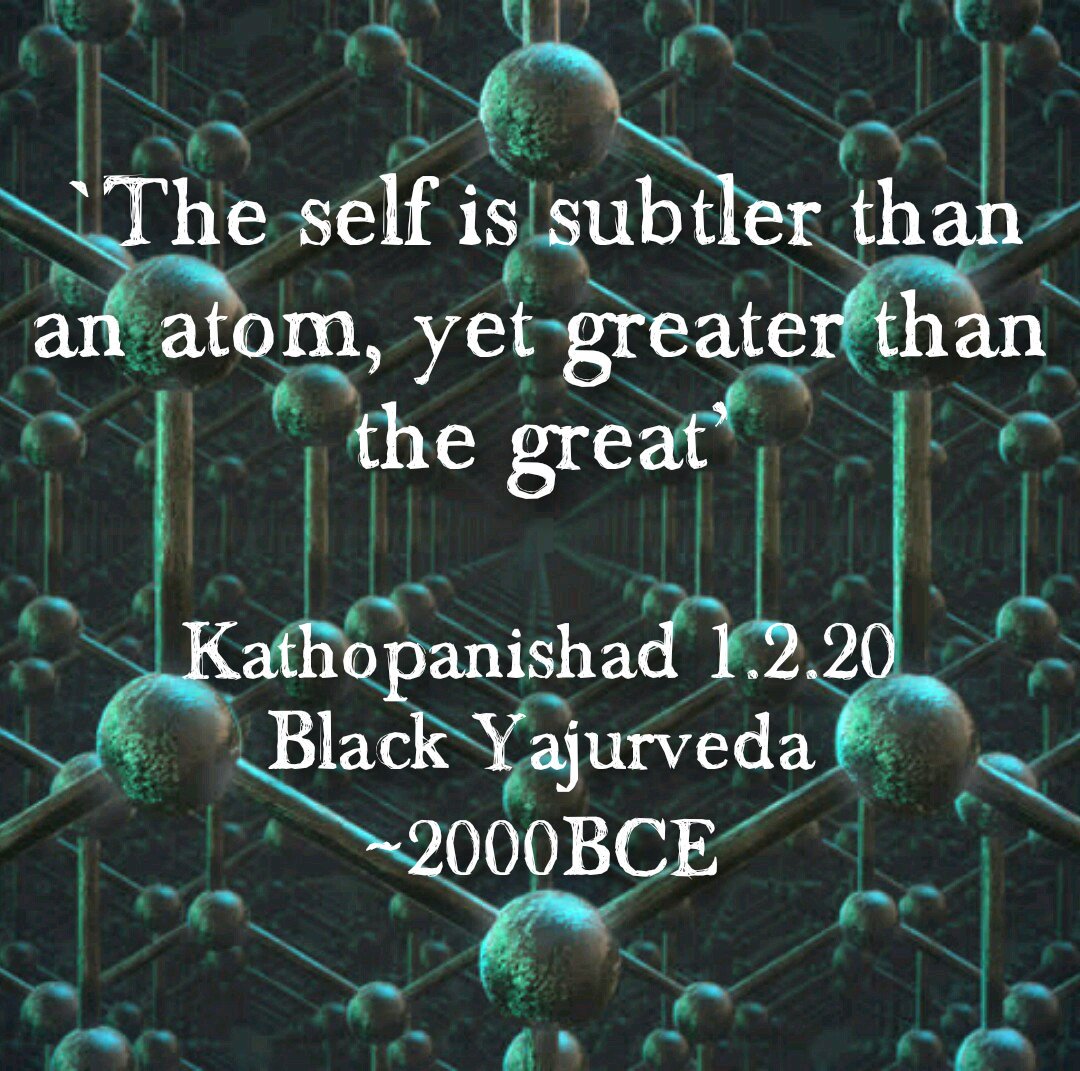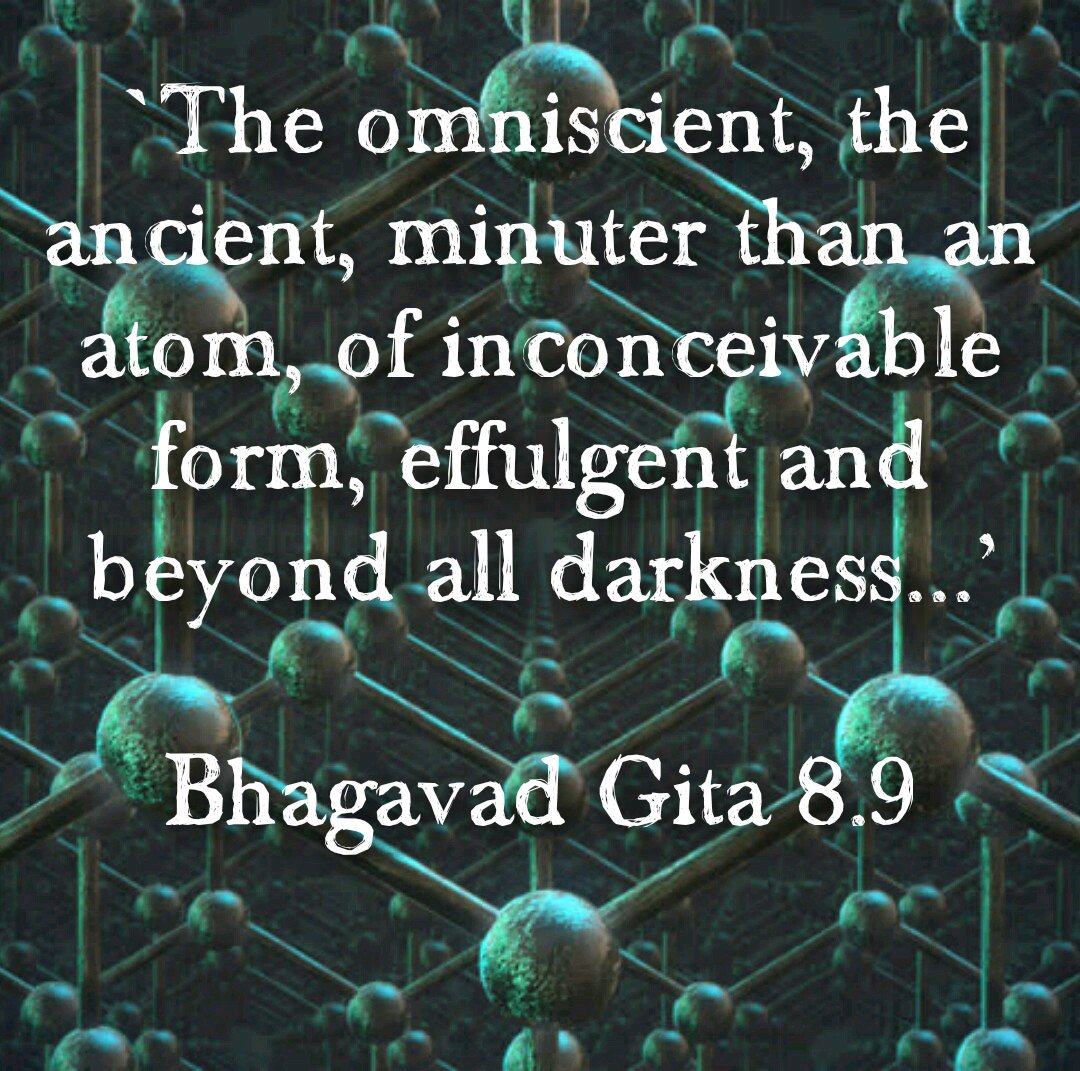For the first time in history! The word atom(anu) appears in literature. 4000 years before Dalton, 1500 years before the Greeks.
The Gita is older than the oldest surviving Zoroastrian Gatha. Older than the oldest book of the Jewish Torah. Or Baudhas or the Jainas. Older even than the 1st atomist Kanada Kashyapa himself. Yet it is the only widely read & #39;scripture& #39; that treats of atoms, mind, space, time etc
But Muellerian historians have worked here too. They try to make it younger than even the new testament of christianity. Reading the wikipedia page, one gets the impression that it belongs to the common era, having undergone the same corruptions as the rest of the mahabharata.
The gita is the ONLY well preserved part of the Jaya, the original mahabharata which had just 8800 verses. It is such a tiny text with only 700 lines/slokas attesting to its antiquity approaching the abstruse sutra literature. Dating it will help us properly date the lost Jaya.
Using simple textual cross references, we can demonstrate that the lower limit of the Gita& #39;s composition approaches 1000 BC. The upper limit is difficult. But archaeology & some valuable contemporary evidences from Brahmana literature suggest the 1st half of the 2nd milleniumBCE
-Bodhayana sutras are placed by Muellerians in the 4th century BC. Both he and Kautilya are familiar with epic characters. This squarely places it& #39;s circulation before 400 BC.
-Both MB and Gita are pre Buddhist, containing no reference to Buddhism- we obtain 500 BC.
-Both MB and Gita are pre Buddhist, containing no reference to Buddhism- we obtain 500 BC.
The most important philosophical rival to Vedic acknowledged by the epic is Samkhya of Kapila. As challenging as Buddhism was during Shankaras time. So much so that the author of the Gita(Krishna/Vyasa?) accepted the samkhya & merged it with Vedanta, creating a whole new system.
Even the Buddha left his home and first sought guidance under Alara Kalama, a samkhya scholar. This shows that Samkhya was the main counter view to Vedic monism even during Buddha& #39;s time. And the Gita too, belonged to such a time, acknowledging and accepting it into Vedic fold.
Take Panini, the brightest ancient Indian
-Arbitrary Muellerian dating places him as early as the 6th century BC. The language of the Gita shows it is earlier than Panini& #39;s grammar.
-Panini is himself familiar with the epic & Vyasa
What is the lower limit of the Gita now?
600 BC
-Arbitrary Muellerian dating places him as early as the 6th century BC. The language of the Gita shows it is earlier than Panini& #39;s grammar.
-Panini is himself familiar with the epic & Vyasa
What is the lower limit of the Gita now?
600 BC
-Panini even mentions a & #39;Bhikshu sutras& #39; of one Parasarya- son of Parasara.
-The Bhikshu sutras is the Brahma sutras and Parasarya is Vyasa, the author of MB & Gita
-Upavarsa, Panini& #39;s guru, even wrote a commentary on both. This work is lost.
What is the lower limit now?
~ 700BC
-The Bhikshu sutras is the Brahma sutras and Parasarya is Vyasa, the author of MB & Gita
-Upavarsa, Panini& #39;s guru, even wrote a commentary on both. This work is lost.
What is the lower limit now?
~ 700BC
-The Brahma sutras itself quotes the Gita in verses 2.3.45 and 4.2.21.
-One interpretation of this is that Badarayana Vyasa who authored the sutras is not Veda Vyasa who authored MB.
-But the Gita also mentions the Brahma sutras in 13.4
-If the former is true, lower limit~800BC
-One interpretation of this is that Badarayana Vyasa who authored the sutras is not Veda Vyasa who authored MB.
-But the Gita also mentions the Brahma sutras in 13.4
-If the former is true, lower limit~800BC
- In support of the view that Gita is older & approaches at least 800 BC, we may note that the Brahma sutras itself acknowledges older, more ancient philosophers whose sutras are lost- Audulomi, Kasakrtsna, Badari, Jaimini, Asmarathya etc
-The Gita may be referring to one of them
-The Gita may be referring to one of them
-Finally we have the Brahmana literature with many contemporary references to epic characters such as Shantanu, Bhishma, Janamejaya etc. No Muellerian historian gives any date more than 1000 BC to ANY brahmana- even to the oldest Aitareya.
-Even that works against their theories!
-Even that works against their theories!

 Read on Twitter
Read on Twitter




